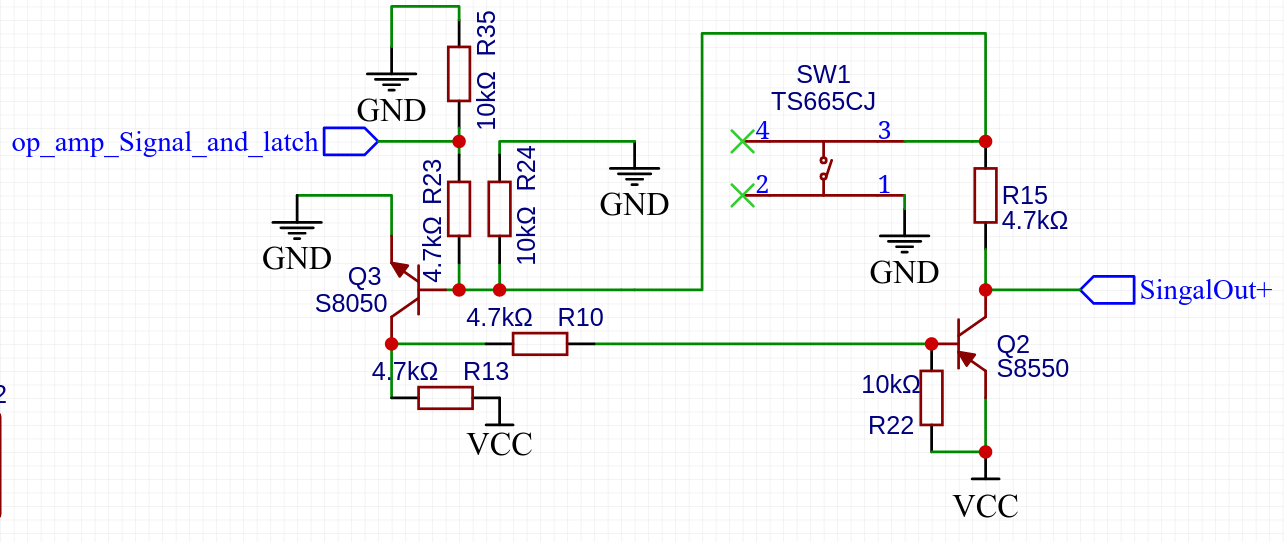I have a very basic NPN - PNP latching circuit:
 [Sorry for the upside down image]
[Sorry for the upside down image]
The latch initially is off, and when the op_amp_Signal_and_latch turns on, the transistors should latch and there should be output to SignalOut+ which drives other transistors.
I just made the latch part in a breadboard with a 10uF snubber capacitor connected to +ve and ground.
It works great until I turn on the fan, the light (even incandescent bulb) or the AC, or pretty much anything in the room. Doing so, latches the transistors, and I've to press the button to release the latch.
Sometimes touching any part of the circuit also latches the circuit.
I've connected an oscilloscope to see the noise that turns on the transistor, but unfortunately I was not able to catch any extra voltage induced by the EMI in the base and collector of the transistors.
My idea was to add a RC Delay circuit to delay latch signal, but with enough EMI it might charge up the capacitor and latch the circuit, just a bit delayed. But it will eventually happen.
So false triggering defeats the purpose of having the latch. When making PCB I'll surely take care of the copper area connected to the ground and also use SMD components which might stick to the board well and reduce the EMI effect due to the grounded copper area.
But I don't like the circuit. How do I get rid of the false triggering?




